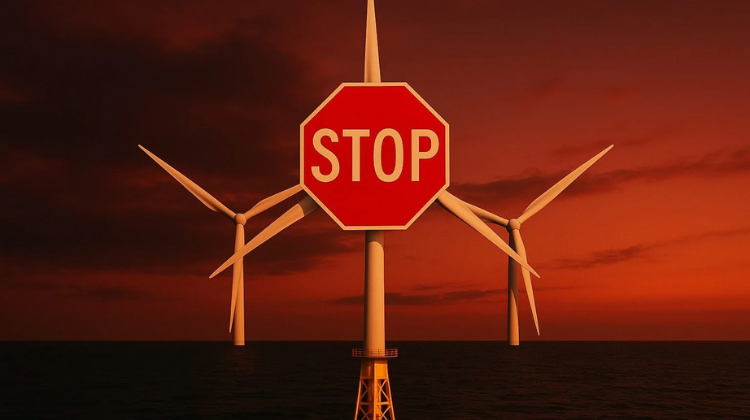“We cannot afford further delays”, affirms the Spanish Renewable Energy Association (AEE). The development of offshore wind power in Spain needs to advance now. The sector is not aware of any objective reasons that justify the current delay in processing the pending regulations.
The industry is ready, the European framework is clear, and our country’s potential is unquestionable. Spain, due to its future market growth scenario, its industrial capabilities, its infrastructure, and the availability of suitable areas in the POEMs, has everything it needs to be at the top of the European floating technology rankings.
There are areas in Spain that can clearly benefit from the activity that offshore wind can contribute to the local socio-economic situation. Continuing to postpone the necessary steps means losing industrial, employment, and technological leadership opportunities at a key moment for the energy transition and the country’s strategic autonomy.
Since the approval of Royal Decree 962/2024, almost a year has passed (September 2024) without any concrete progress in the development of offshore wind power along the Spanish coast. Meanwhile, neighboring countries are strategically positioning themselves to attract investment, employment, technological innovation, and port activity opportunities associated with floating wind power.
Portugal, for example, has announced that it will define its auction model in the coming weeks. France has awarded its floating wind energy auction in the Mediterranean and announced the offshore wind project in the Bay of Biscay (five proposed wind farms and 340 wind turbines), and Morocco has presented a 1,000 MW project on the Atlantic coast by 2029.
“Spain has everything it needs to be on the podium of leaders in floating offshore wind power in Europe: industry, infrastructure, technological capabilities and suitable areas identified in the POEMs. If we do not commit to being among the first in its deployment, we will relegate our country to being a ‘dependent buyer’ of technology that others will manufacture, without the capacity to occupy the industrial and added value gap that corresponds to us and that we did know how to take advantage of in the past with onshore technology” , said Juan Virgilio Márquez , general director of AEE .
Until now, our country has been a benchmark in the construction of offshore wind components—100% of which have been exported—and in the development of prototypes, where we are the world’s leading developer. However, all of this will be limited if we don’t have a small local market focused on floating wind power.Above all, we must consider our supply chain, medium-sized, local companies that will be unable to join the major integrators on the global stage if they do not participate from the outset in the first floating wind farms built with a commercial dimension.
Therefore, we must continue moving forward with the next regulatory steps. There are still aspects that need to be designed in detail by all stakeholders. The next step is the public consultation for the design of the Ministerial Order setting out the bases for the call for the first auction in Spain.
AEE (more than 350 companies in the wind sector) and the Offshore Wind Forum (more than 280 signatories, including unions, academics, business representatives, professional associations, etc.) remind us that the first pilot auction should not wait any longer and should logically be held in the Canary Islands , given their favorable wind resource, industrial, social, and political conditions.
The logical option is for the Canary Islands to spearhead the auction . Its electricity generation system is much more expensive and polluting than that on the Iberian Peninsula, where offshore wind power would generate obvious savings for consumers . It has ideal logistics and shipbuilding infrastructure .
There is widespread consensus on the opportunity to install floating wind farms, and there is a calm and constructive debate on how to make them coexist with other activities such as fishing. It is convinced that the installation of offshore wind power will reinforce the seal of sustainable tourism excellence that is so sought after in the archipelago.
Subsequently, it will be necessary to move forward with auctions on the Iberian Peninsula to leverage the lessons learned and ensure balanced and efficient development.
The deployment of offshore wind power on the Iberian Peninsula requires a balanced geographical approach, combined with long-term visibility, necessary to avoid compromising efficiency or straining the operation of the Iberian electricity system, in addition to ensuring the economic viability of the projects. Both Galicia and Catalonia are territories with enormous potential that cannot be left behind.
For all the above reasons, we request that the Ministry publish the public consultation on the ministerial order for the first offshore wind auction, along with a clear milestone schedule, including the planning for subsequent ministerial orders and calls for tenders.
Furthermore, AEE and theThe Offshore Wind Forum underscores the urgent need to resolve the need for grants from the Institute for Energy Diversification and Savings (IDAE) to modernize key port infrastructure such as A Coruña, Castellón, and Tarragona, which are essential for supporting the new industrial value chain that accompanies the development of this technology.
The risk of missing the offshore wind power train is increasingly tangible: “Several companies interested in developing projects in Spain are already reorienting their strategies toward other countries due to the lack of progress and regulatory certainty ,” warned Juan Virgilio Márquez.
Global installed capacity and targets for Spain
According to the latest report from the Global Wind Energy Council (GWEC) from June 2025, 8 GW of new offshore wind capacity was connected by 2024.
The global offshore wind market grew by an average of 10% per year over the last decade, reaching a total of 83.2 GW of installations, representing 7.3% of total global wind capacity by the end of 2024, at which time a total of 278 MW of floating wind power had been installed worldwide, of which 101 MW was installed in Norway, 78 MW in the United Kingdom, 40 MW in China, 27 MW in France and 25 MW in Portugal. China leads the world in new offshore wind installations for the seventh consecutive year, followed by the United Kingdom.
The European Strategic Energy Technologies Plan (SETPlan) adopted as a strategic objective to consolidate the EU’s global leadership in offshore wind energy, and, at the end of 2020, the European Commission approved the European Offshore Renewable Energy Strategy, establishing targets of more than 60 GW in 2030 and 300 GW in 2050.
In Spain, the objective of installing 3 GW of offshore wind power nationwide by 2030 has been established, as indicated by the National Integrated Energy and Climate Plan (PNIEC).






























